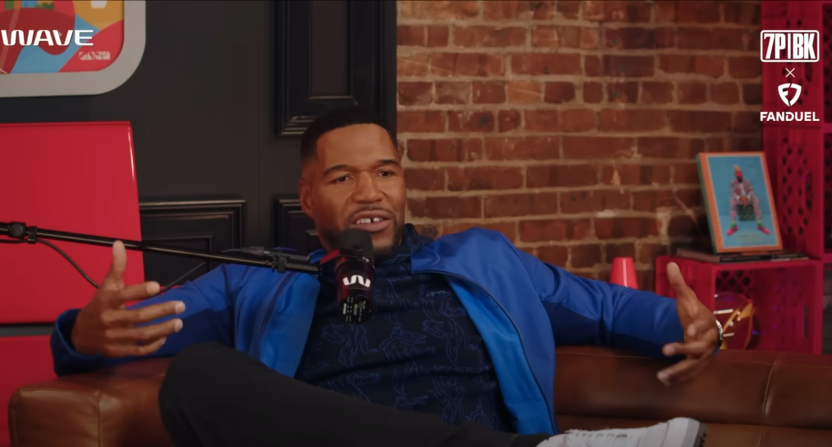Michael Strahan is one of the most successful athletes in his post-retirement media career. But when he was piling up sacks for the New York Giants, Strahan knew the importance of keeping the main thing the main thing.
So while the Good Morning America and Fox NFL Sunday co-host set the template for athletes across the NFL and NBA, he is worried that young athletes today are getting ahead of themselves.
“I look at guys now and I think so many are so focused on the next chapter of life when they’re not getting the most out of this chapter,” Strahan explained in a recent appearance on 7PM In Brooklyn with Carmelo Anthony.
Anthony is one of the many retired stars who created content online, and the former New York Knicks star also recently signed on with NBC’s NBA coverage. But Strahan’s comments focused more on active athletes, from Draymond Green to Travis Kelce to Micah Parsons and beyond, who have to balance media commitments with the rigors of competing daily.
Michael Strahan worries that the relatively small opportunity of hosting a podcast or being on television comes at the expense of putting their best foot forward as athletes.
“If you can get a podcast … do your thing. I have no hate on any of them,” Strahan said. “But you better make sure you don’t mess up your primary worrying about something secondary. And I see so many guys worried about their secondary job, ‘I want to build a brand.'”
To Strahan’s point, many of these opportunities would likely be available for athletes when they retire as well. And it’s easy to see how a teammate or coach could view these media gigs as distractions.
At the same time, the sports media space is so competitive and lucrative these days that any leg up an athlete can get probably goes a long way. From Jason Kelce to JJ Redick to Candace Parker, the most established recently retired athletes on TV all got involved in media and created a runway for themselves.
As Strahan explained, the best approach might be for athletes to wait until they have established a foundation as pros before they start exploring the media world. Strahan used Green as an example of how to time it out.
“Draymond has been playing a long time. He wasn’t doing this his first few years in the league,” Strahan explained. “Draymond knows what he can do, how he can do, how he can turn the switch on and off. And he’s able to compartmentalize now. When you’re a young, 20-something-year-old player, I don’t think you’re ready. Especially if you’re truly committed to what you’re doing.”
With so many opportunities and dollars in sports media now, there is no exact science to this. After all, most athletes have 30 to 40 years left in their careers when they stop playing. It’s hard to tell someone to focus less on that just to get 5 or 10 percent more out of their relatively short playing careers.
Still, if a successful media star like Michael Strahan is worried that athletes are becoming distracted by these opportunities, he is probably right.
